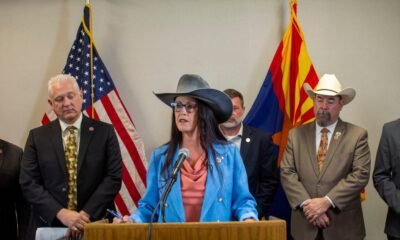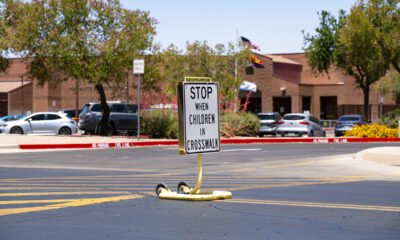child care
DCS Misses Golden Opportunity to Transform Child Care Crisis

The Arizona child welfare system continues to face criticism as Governor Katie Hobbs’ administration and the state Legislature struggle to enact meaningful reforms.
Following Matt Stewart’s brief appointment to revitalize the Department of Child Safety (DCS), he was ousted after two months due to Republican pressure. David Lujan succeeded him, but he made it clear from the outset that he did not intend to introduce radical changes.
Recently, Lujan oversaw a controversial budget decision that redirected $6.5 million from more favorable substitute care models—such as kinship and family foster care—toward group homes and institutions, widely regarded as the least beneficial option for children.
This shift is concerning, particularly given the financial strain DCS is experiencing. With a budget shortfall, the reliance on expensive group care settings raises questions about the agency’s priorities.
Arizona’s practice of removing children from their homes occurs at a staggering rate, 50% higher than the national average. The statistics are alarming: Maricopa County leads the nation in family separations among large counties, and Arizona’s use of institutional care stands at double the national average.
The negative outcomes from relying on group homes are well documented. Incidents such as the tragic deaths of diabetic children in group homes, where necessary medical care was neglected, highlight severe systemic failures.
Moreover, the case of Emily Pike, a 14-year-old found deceased after running away from a group home, underscores the dangers inherent in these facilities. This home had faced numerous police calls and reports of missing persons, raising serious questions about the safety and effectiveness of group care.
Research shows that the risk of abuse in group homes is significantly higher than in family-based care. A U.S. Senate Committee report explicitly notes that the dangers associated with institutionalizing children are a persistent issue tied to the operational model.
Even beyond incidents of abuse, the group home model is fundamentally flawed. Studies indicate that congregate care fails to meet the needs of children and that alternatives exist, which provide better outcomes.
While DCS claims the demand for family foster homes is high, this is largely due to the excessive number of children being removed from their families. Restoring some children to their homes could alleviate pressure on the foster care system, leaving more room for those truly in need of care.
Opponents argue that group homes are necessary for children with serious behavioral problems, a misconception that overlooks the potential for supportive interventions that keep families together. Providing families with the right resources can prevent many situations that lead to separation.
Should removal be necessary, DCS could enhance kinship care by offering intensive support to relatives and extended families, which is more cost-effective and beneficial for children.
However, such solutions may be perceived as radical within the current political context, leading to a reluctance to adopt them. Instead, the Legislature seems to endorse Lujan’s strategy, which many believe fails to address the underlying issues adequately.
As the debate continues, critics worry that without decisive action, the welfare system in Arizona will remain trapped in a cycle of ineffective policies and missed opportunities.
Richard Wexler, Executive Director of the National Coalition for Child Protection Reform, shines a spotlight on these ongoing challenges.

















